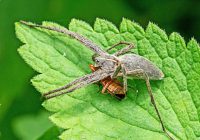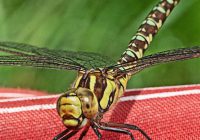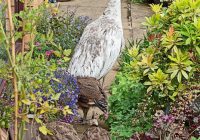Dr Phil Smith’s Wildlife Notes
July 2020
After the strange happenings of recent months, a return to more “normal” summer weather was welcome. Measureable rain fell in Formby on 14 days – about average for July. However, it was often cool and breezy, with a short-lived heatwave on 31st.
The earlier spring drought still seemed to be exerting its influence on our wildlife. Local observers reported much lower numbers of some butterflies and moths, while other species seemed unaffected. Most striking was the almost complete absence of burnet moths, these striking red-and-black insects being a familiar accompaniment to July walks on the dunes. Instead of dozens, Trevor Davenport and I saw only two Narrow-bordered Five-spot Burnets on the purple Viper’s Bugloss at Hightown, though a visit on 6th was rewarded with a Hummingbird Hawkmothnectaring on these plants. Six-spot Burnets were missing until 30th when we found the first at Ainsdale National Nature Reserve. Their development seems to have been held up, by the dry conditions earlier. Dragonflies also appeared in smaller numbers than expected, though this was probably more to do with the low temperatures and windy conditions, as their breeding pools had plenty of water after the wet winter.
Despite these issues, I had a wonderful month recording and photographing insects: “The little things that run the World” as the great ecologist E.O. Wilson wrote. Things began well on 1st when Trevor Davenport and I found a Dune Villa at Crosby. A member of the bee-fly family, this elusive insect occurs only on large coastal sand-dune systems and, until this year, I had only seen two in 50 years. I found five more during July! The following day, I visited an area of grassland sheltered by trees at Ravenmeols where a colony of Ringlets has been present for few years. Sure enough, they were still there; I counted ten. Tall yellow flowers of Wild Parsnip attracted a cornucopia of flies and solitary wasps justifying several more visits during the month. Spectacular finds, included the enormous black and bristly Giant Tachina, the largest of its family in Europe, followed by the smaller but more colourful Phasia hemiptera, a parasite of shieldbugs. I sent photos of another tachinid fly to the national expert on this family, Chris Raper. He named it as Linnaemya picta, new to South Lancashire and Cheshire. The first modern record in Kent in 2009 was followed by a rapid movement northwards – yet another insect responding to climate change. The Wild Parsnip also produced one of the strangest British insects, Gasteruption jaculator. It uses its exceptionally long white-tipped ovipositor to parasitise solitary bees and wasps.
Nearby Range Lane was graced by a superb Hornet Hoverfly – my first of the year, while a patch of Horse Radish provided a perch for both male and female Marsh Snipeflies.
A short walk from Spruce Way down Wicks Path was productive, including my first Dock Bug, a recent arrival in our region from southern clines, while three Dune Villas on the disturbed sandy track were completely unexpected. A new generation of immaculate Speckled Woods joined the abundant Gatekeepers sunning themselves on the brambles. A large spider feeding on an orange Soldier Beetle was identified by Richard Burkmar as a Nursery Web Spider, supposedly common but not familiar to me. Southern Hawkers are known to be curious but a female went over the top by perching on my bag for several minutes while I was carrying it.
I wasn’t the only one to find exciting insects in July. Natalie Hunt sent me some excellent photos of a strange-looking fly in her garden. Neither I nor Pete Kinsella had a clue what it could be. Expert opinion was sought from Phil Brighton and he suggested the Locust Blowfly an African species that breeds on the eggs of the Desert Locust, having been much studied as a possible biological control agent. Until recently the Locust Blowfly was thought of as a rare vagrant to Britain but, since 2016, it has turned up more regularly, though mainly in the south and east. It may have switched to breeding on grasshoppers. Natalie’s was the first for Cheshire, Merseyside and Lancashire.
Routine plant recording was not neglected during this insect-dominated month. A few stems from Birkdale dunes that might be a rare Baltic Rush hybrid were sent to experts, Prof. Clive Stace and Mike Wilcox. Both decided it was just Baltic Rush struggling to survive under dense willow scrub at its only English locality. I continued to study the incredibly rich flora of Birkdale Green Beach, a spectacular abundance of Grass-of-Parnassus on the youngest section north of Ainsdale-on-Sea being especially pleasing.I also went to the Wildlife Trust’s Freshfield Dune Heath Nature Reserve to see the locally extinct Sheep’s-bit, reintroduced by Joshua Styles’ North West Rare Plant Initiative. I found only one bright-blue flower but it’s a start.
Birds inevitably took a back seat, my most remarkable sighting being of a Peahen, with three chicks in tow, which strolled past my lounge window and into my neighbour’s garden. I thought I was having hallucinations and dashed out with my camera to get proof that I wasn’t. Who breeds Peafowl in Formby?!






